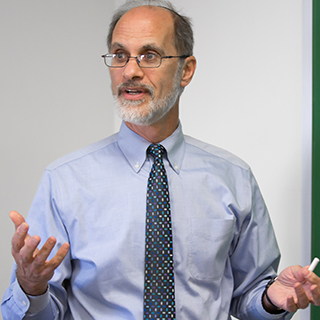Talmudic Writings on the Passage from this Life to the Next

Download Sources
Part of the series, The Space in Between: Thresholds and Borders in Jewish Life and Thought
With Dr. David Kraemer, Joseph J. and Dora Abbell Librarian and Professor of Talmud and Rabbinics
It may surprise you to learn that, in the opinion of Talmudic teachings and the traditions that emerge from them, death is not a moment but a process—a transition that leads from one stage of life (which we call “life”) to another (which we call “death”). These beliefs have profound implications for our understanding of Jewish rituals of death and mourning, Jewish theology, and much else. Prof. Kraemer offers a close reading of the texts that discuss these rituals as well as the beliefs underlying them.
Lecture Notes
- Kraemer introduced the rabbinic concept of death in which someone is not wholly dead until the third day after their death. In the rabbinic imagination, the deceased continued to be a presence especially in the first three days when the soul continues to flutter over the body. There is also a concept that the newly deceased body feels the pain of decomposition, but earth provides comfort for the deceased.
- The way shiva is practiced mirrors this concept and the experience of the deceased (being close to the ground, separated). Shiva is also designed so that those who are mourning act similarly to the deceased (ie. can’t leave their homes, engage in sexual relations, etc) – and then the mourners diverge from the deceased such that they slowly get reintegrated into the community and the deceased slowly go through stages of death.
- Death was not an end, but a transition and the rituals around death reflect that the person who died needs comforting in addition to those who are mourning. Death is a process that occurs in stages over time – but it seems that there is agreement that the consciousness continues after the body decomposes and that death is merely an end for the flesh/body but that our lives do continue in some way.
- Olam Haba (the world to come) is not something that happens immediately after we die, rather it happens at some point in the future, following messianic times.
About the Series
We are living in an undefined time: our daily existence is no longer dominated by the pandemic, yet neither have we settled into a new normal. This sense of being in transition—neither here nor there— can feel destabilizing; but is the time in between really temporary, or are we always living in between moments, identities, and phases of life?
In this series, JTS scholars will delve into the idea of liminality—the time or space in between—which we encounter often in Jewish ritual, identity, law, and life. Join us to consider what these many manifestations of “in-between-ness” can teach us about ourselves and about Judaism, and to explore how we might find strength and meaning in an orientation not of “either/or” but of “both/and.”
We will explore themes of borders, thresholds and transitions as they pertain to the story of Creation, gender, conversion, birth and death, the duality of living as a Jew in America, and more.
SPONSOR A SESSION
At JTS, we are committed to providing the Jewish community with outstanding classes in Judaic studies. We hope you will partner with us so that we can continue to do so. Did you know that you can sponsor a learning session to honor a loved one, celebrate an occasion, or commemorate a yahrzeit? You can find sponsorship information here.



